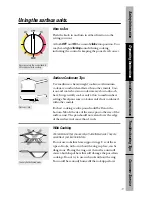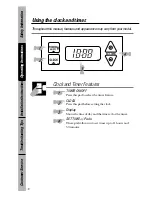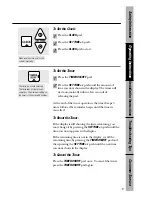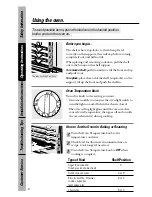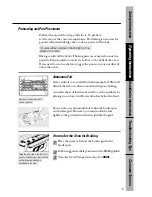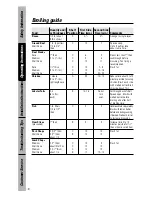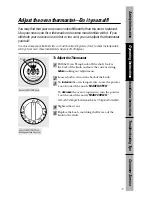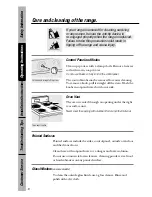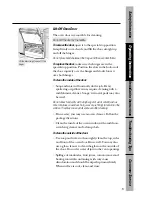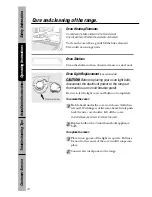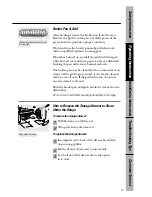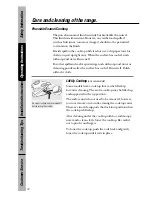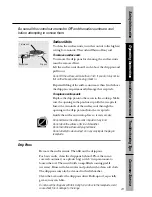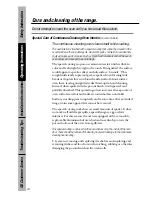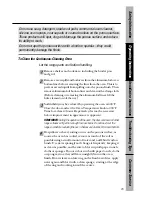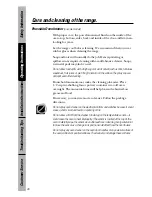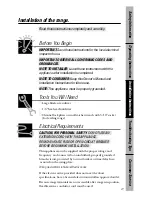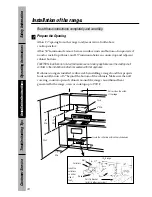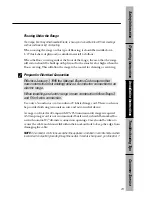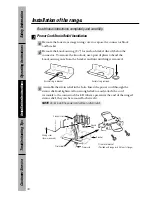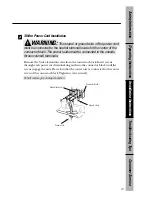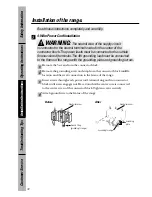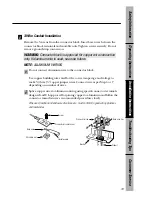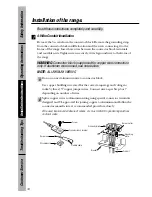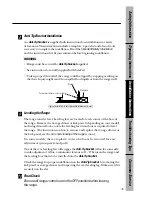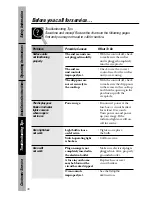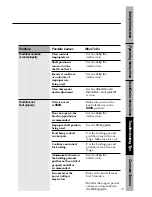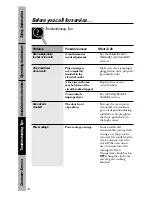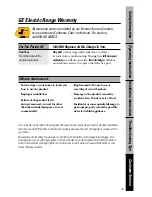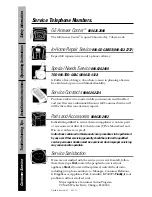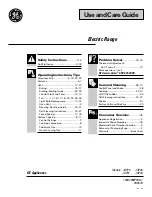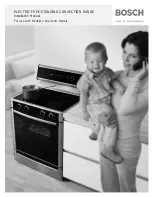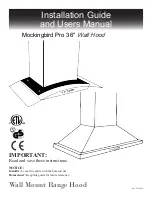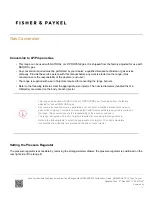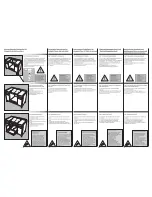
25
Troubleshooting T
ips
Installation Instructions
Customer Service
Operating Instructions
Safety Information
Do not use soap, detergent, steel wool pads, commercial oven cleaner,
silicone oven sprays, coarse pads or coarse brushes on the porous surface.
These products will spot, clog and damage the porous surface and reduce
its ability to work.
Do not scrape the porous surface with a knife or spatula—they could
permanently damage the finish.
Let the range parts cool before handling.
Remove shelves and cookware, including the broiler pan
and grid.
Remove excess spills and boilovers from the aluminum foil oven
bottom liner before removing the liner from the oven. This is to
prevent excess liquids from spilling onto the porous finish. Then
remove aluminum foil bottom liner and clean with a damp cloth.
(Before cleaning or removing the aluminum foil liner, lift the
bake element out of the way.)
Soil visibility may be reduced by operating the oven at 400°F.
Close the door and set the Oven Temperature knob to 400°F.
Time for at least 4 hours. Repeated cycles may be necessary
before improvement in appearance is apparent.
REMEMBER:
During the operation of the oven, the door, window and other
range surfaces will get hot enough to cause burns. Do not touch. Let the
range cool before replacing the oven shelves and aluminum foil oven bottom.
If a spillover or heavy soiling occurs on the porous surface, as
soon as the oven has cooled, remove as much of the soil as
possible using a small amount of water and a stiff-bristle nylon
brush. Use water sparingly and change it frequently, keeping it
as clean as possible, and be sure to blot it up with paper towels,
cloths or sponges. Do not rub or scrub with paper towels, cloths
or sponges, since they will leave unsightly lint on the oven
finish. If water leaves a white ring on the finish as it dries, apply
water again and blot it with a clean sponge, starting at the edge
of the ring and working toward the center.
4
3
2
1
To Clean the Continuous-Cleaning Oven

